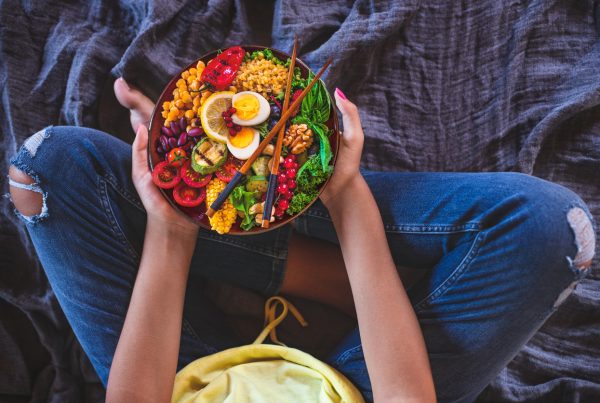Healthy eating tends to have a reputation for being expensive but it doesn’t have to be, says Dr Linia Patel.
Why is healthy eating perceived to be expensive?
Measuring the relationship between health and price of food is difficult. Price and quality aren’t perfectly correlated but it doesn’t stop us from using price to judge quality. A recent study published in the Journal of Consumer Research showed exactly this! The study reported that consumers have an intuition that healthy foods are more expensive, even if this holds true in only some product categories but not all1. Studies comparing the price per unit weight of food from the same group suggest that healthier options are in fact cheaper in most cases2. For example, 200g of chickpeas versus 200g of bacon, chickpeas being much more nutrient dense than bacon. Part of the issue is that we confuse ‘healthy’ with other labels like organic and gluten free. Add to that the rise of ‘superfoods’, which are simply marketing tricks to make you feel that some foods are even healthier than others.
The first place to start when it comes to eating healthily on a budget is to understand what to actually buy. You don’t have to let your wallet dictate your wellness.
Top inexpensive nutrient-dense food options for healthy eating:
- Beans and lentils. Plant-based protein sources such as legumes are packed with protein, fibre, vitamin and minerals. They are not only less costly than animal protein, but they are good for the planet too.
- Frozen veggies and fruit. Just as nutritious as their fresh counterparts, frozen fruit and veggies are less expensive and available all year around. Frozen produce is usually sold in large portions, allowing you to use only what you need and keep the rest in your freezer.
- Eggs. Not only are they full of vitamins, minerals and healthy fats but they are also a low-cost source of protein.
- Organ meats. Although not a popular cut of meat, they are nutrient dense and you can often get them at a cheap price. Organ meats are packed with protein, iron, vitamin A, B12 and folate, as well as many other important nutrients. Organ meats have a strong and unique flavour, but you can develop a taste for them!
- Wholegrains. Lots of wholegrains are tasty and affordable. While ancient grains like quinoa, freekeh and farro are fashionable ingredients that may carry a higher price tag, humble wholegrains like brown rice, oats and barley are just as tasty and healthy!
- Local produce. Eating in season is more economical. When produce is in season, there is an abundance and it’s often available at a lower price.
- Smart snacks. Snacking can really catch you out both in the health and cost department. Very often a lot of the snacks you eat you can make yourself for a much lower price. Buying whole popcorn kernels and popping your own popcorn is just one example.
Developing a taste for organ meats
- It can take some time to develop a taste for organ meats, so it may be best to start off with the more mildly flavoured organs like tongue and heart.
- Try grinding up liver and kidneys and combining them with beef or pork mince in dishes such as Bolognese.
- Add organ meats to a slow-cooked stew with other meats such as lamb shank. This can help you gradually develop a taste for these stronger flavours.
Money-saving tips
As well as understanding which foods are healthy, filling and budget friendly, it’s also helpful to follow a few of the tips below to help your budget stretch even further:
- Plan your meals. One of the best ways to keep costs low is to plan your meals around budget-friendly ingredients. When you plan, you are not only cutting down on food waste but you also avoid impulse buying.
- Buy in bulk. But only the items you’ll use. Bulk buying can be a great way of stocking up for less but be sure to not stock up on items you won’t use.
- Invest in own-brand products. Not only are they cheaper but they are often just as nutritious and often of a similar quality too. More and more brands are pricing whole foods at near or same cost as refined versions, meaning you can multiply your intake of nutrients with little or no extra charge.
- Batch cook. This will save you time and money. Use leftovers for lunch or freeze leftovers for future meals.
- Think before you throw. This is not a suggestion to eat rotten food, but we often waste tonnes of perfectly edible food. There are many foods you can eat past their expiration date, which is often a conservative estimate. So, think before you throw!
Have you checked out Linia’s best-selling online educations?
- Nutrition for Menopause
- Gut Health – the power of the microbiome
- Low Carb: the evidence & application
- Sports Nutrition Basics
- Plant-Based Eating: The Essentials
- Food as Medicine? Food and inflammation
Which one will you choose?
About the author

Dr Linia Patel has a BSc degree in biochemistry and physiology and has recently achieved a PhD in public health. Linia is a leading dietitian and sports nutritionist. Her passion is translating nutritional science into easy-to-digest and practical advice.
References
- Haws et al (2017), Healthy diets make empty wallets: The Healthy=Expensive Intuition, Journal of Consumer Research. 43(6): 992-1,007.
- Kakaa et al (2018), How we make choices about food. Analysis of factors influencing food expenditure in Northern Italy, European Journal of Public Health, 28(4).







